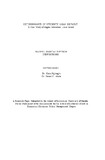| dc.description.abstract | The financing of higher education in Kenya has been a big challenge to the Kenyan Government especially due to the ever growing student population and the impact of poverty levels in the country. The Higher Education Loans Board has been the primary vehicle for delivering direct financial assistance to university students in Kenya since its inception in 1995, a role earlier played by the Ministry of Education. In the recent past the cost of higher education has gone up and default by previous beneficiaries of the loans scheme continues to be a challenge to HELB leading to redundancy of the established revolving fund, thus affecting the running of the scheme and access to university education by qualified Kenyans who cannot afford to meet the ever
increasing cost.
After the inception ofHELB, recovery shot up tremendously but still default rates remained high with the loan performance in terms of repayment being 57% as at June 2010. Given that the Board plays an important role in enhancing access to higher education it is of great important to review the mechanism and strategies of curbing the persistence of the university student loans default.
In an effort to better understand which students are likely to default, and ultimately to design programs to reduce default, this study performed an analysis of student loan beneficiaries focusing on factors identified as critical determinants of default which were financial, demographic characteristics, and institutional factors. The study, apart from beneficiaries of the loan also targeted chartered universities (public and private), whose students were/are funded through the university students' loans scheme and companies (employers whose employees include beneficiaries of the university student loans).
The study used a probit model which was expected to yield the predicted probability of default among the beneficiaries of the loan. The findings suggest that HELB will continue to find loan recovery an uphill task in the face of increasing unemployment and underemployment situation in which most the loan beneficiaries find themselves in. HELB has however done a relatively good job with regard making beneficiaries aware of their contractual obligations on the repayment of the loan.
The likelihood that a loanee will default on the university loan was indicated to be related to a complex web of factors and developing a default management program may therefore be the first step to reducing default. An effective default management program will ensure that the loanees at the point of receipt of the loan are aware of their responsibility and repayment options available even in the face of unemployment and underemployment. | en_US |

